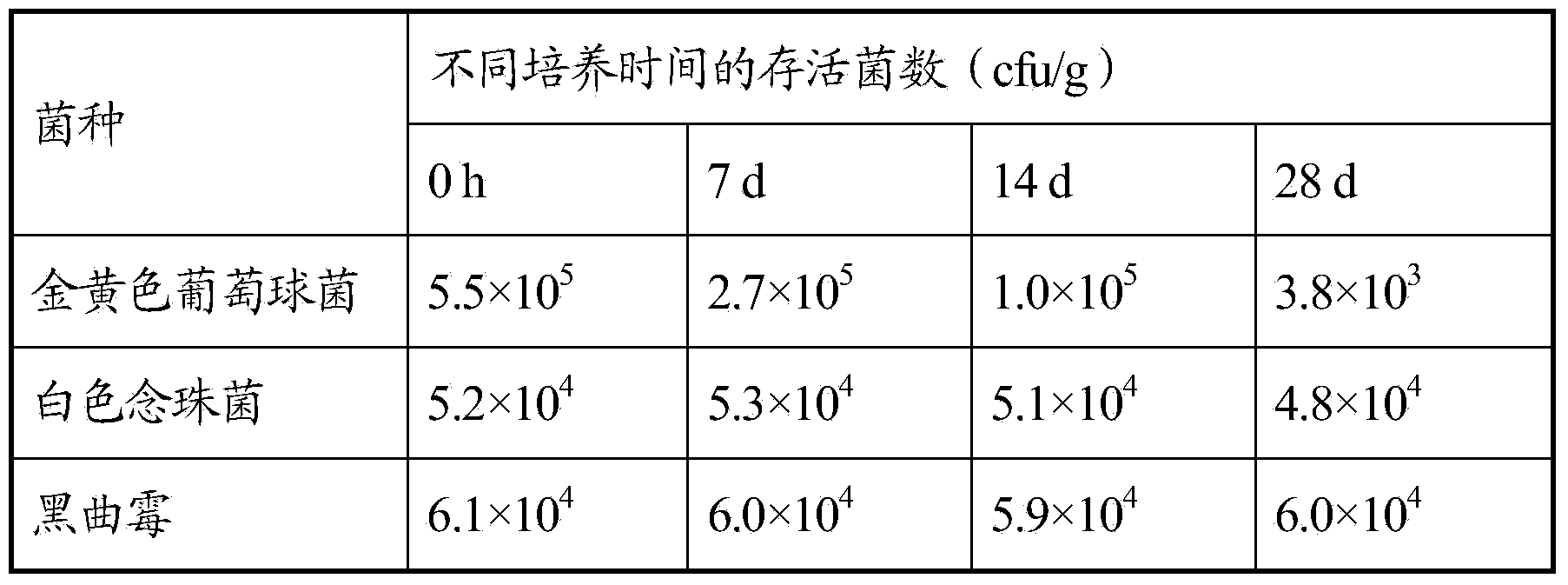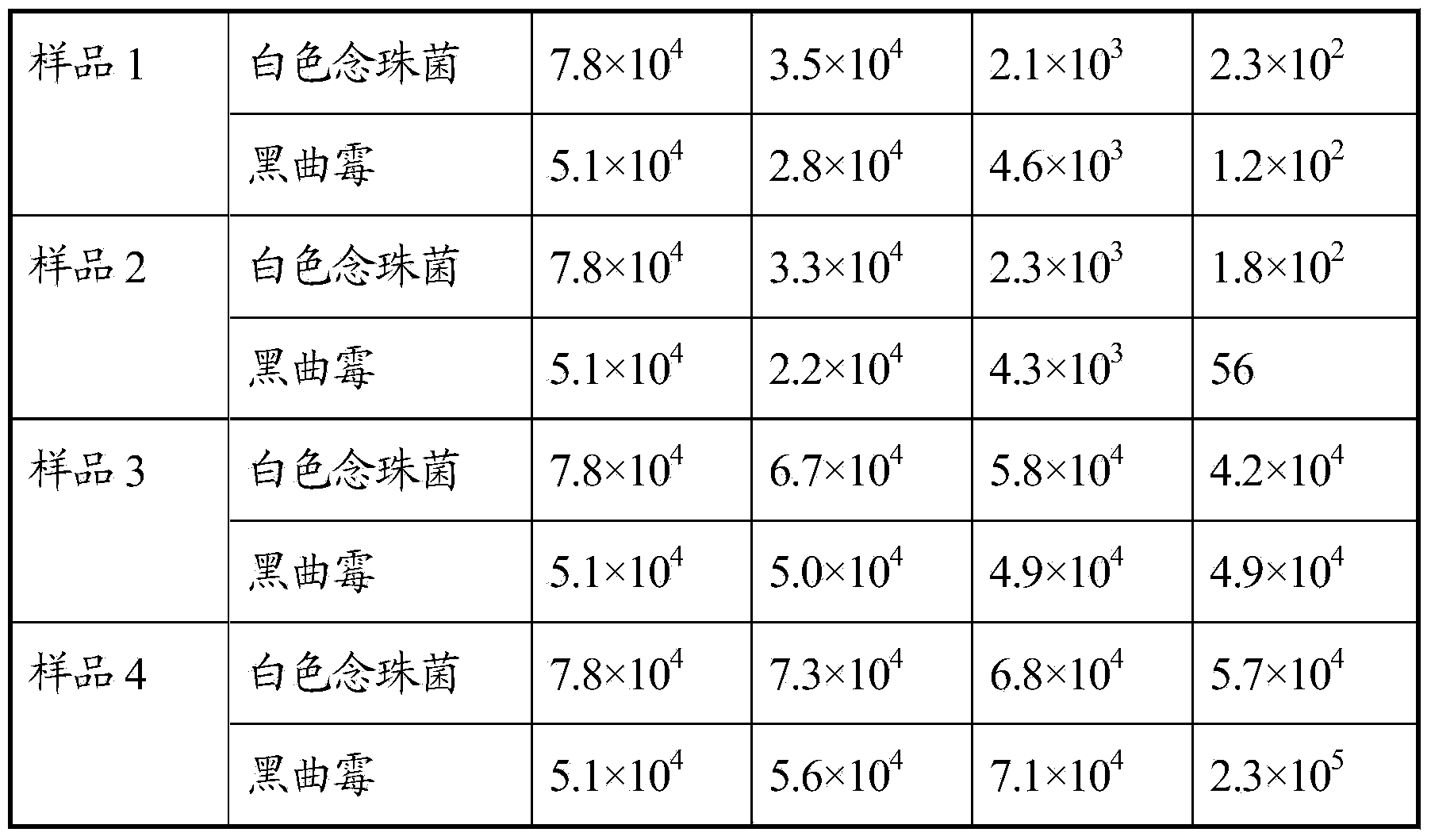Method for detecting antiseptic power of seasoning
A condiment and ability technology, which is applied in the field of detection of antiseptic ability of condiments, can solve the problems of strain selection, detection time, and result judgment standards that cannot be used universally, so as to ensure the microbial safety of products, save R&D costs, and improve R&D efficiency. Effect
- Summary
- Abstract
- Description
- Claims
- Application Information
AI Technical Summary
Problems solved by technology
Method used
Image
Examples
Embodiment 1
[0054] This embodiment is to detect the antiseptic ability of the newly developed oyster sauce sample, and determine whether the antiseptic system of the new formula is safe. This embodiment includes the following steps:
[0055] 1) Prepare strains
[0056] This embodiment selects standard bacterial strains; the water activity of the tested product—the newly developed oyster sauce sample is determined to be 0.88, and the bacterial strains selected for testing are Staphylococcus aureus, Candida albicans and Aspergillus niger accordingly.
[0057] 2) Prepare the inoculum suspension
[0058] Inoculate the fresh culture of Staphylococcus aureus into the nutrient agar medium, cultivate it at 36°C for 18 hours, add an appropriate amount of sterile saline to elute the culture on the surface of the agar, and then suck out the bacterial suspension until it is free. In the bacteria test tube, the number of bacteria in 1mL made by turbidimetric method is about 10 8 CFU bacterial suspe...
Embodiment 2
[0070] In this example, due to market demand, the preservative of soybean paste needs to be replaced from A to B. When the product preservative is changed from A to B, whether the product preservative system can still meet the original standard and the amount of preservative B added How long can the anti-corrosion system be guaranteed.
[0071] 1) Prepare strains
[0072] Select standard bacterial classification in the present embodiment; The water activity of measured test product is 0.85, selects the bacterial classification used for testing accordingly and is Candida albicans and Aspergillus niger.
[0073] 2) Prepare the inoculum suspension
[0074] A fresh culture of Candida albicans was inoculated into the wort medium and incubated at a temperature of 25°C for 48 hours. Wash the bacteria with sterile normal saline, and use turbidimetric method or hemocytometer method to prepare 10 per 1 mL 6 ~10 7 CFU of bacterial suspension.
[0075] Inoculate the fresh culture of ...
Embodiment 3
[0086] The main spoilage problem of soy sauce is the production of white film. The strongest film-forming yeast strain has been isolated from the film-producing soy sauce samples, and the antiseptic ability of A, B, and C three soy sauce products on film-forming yeast has been evaluated.
[0087] 1) Prepare strains
[0088] The strain is the film-forming yeast isolated in the laboratory.
[0089] 2) Prepare the inoculum suspension
[0090] Inoculate the fresh culture of film-forming yeast into the wort medium, cultivate it at 28°C for 50 hours, wash the bacteria with sterile physiological saline, and use hemocytometer method to prepare 10 per mL of 6 ~10 7 CFU of bacterial suspension.
[0091] 3) Inoculation of the test article
[0092] Under aseptic conditions, absorb the film-forming yeast suspension and inoculate them into the three soy sauce products A, B, and C respectively, the inoculation amount is 1%, and mix well after inoculation, so that the test bacteria in the...
PUM
 Login to View More
Login to View More Abstract
Description
Claims
Application Information
 Login to View More
Login to View More - R&D
- Intellectual Property
- Life Sciences
- Materials
- Tech Scout
- Unparalleled Data Quality
- Higher Quality Content
- 60% Fewer Hallucinations
Browse by: Latest US Patents, China's latest patents, Technical Efficacy Thesaurus, Application Domain, Technology Topic, Popular Technical Reports.
© 2025 PatSnap. All rights reserved.Legal|Privacy policy|Modern Slavery Act Transparency Statement|Sitemap|About US| Contact US: help@patsnap.com



